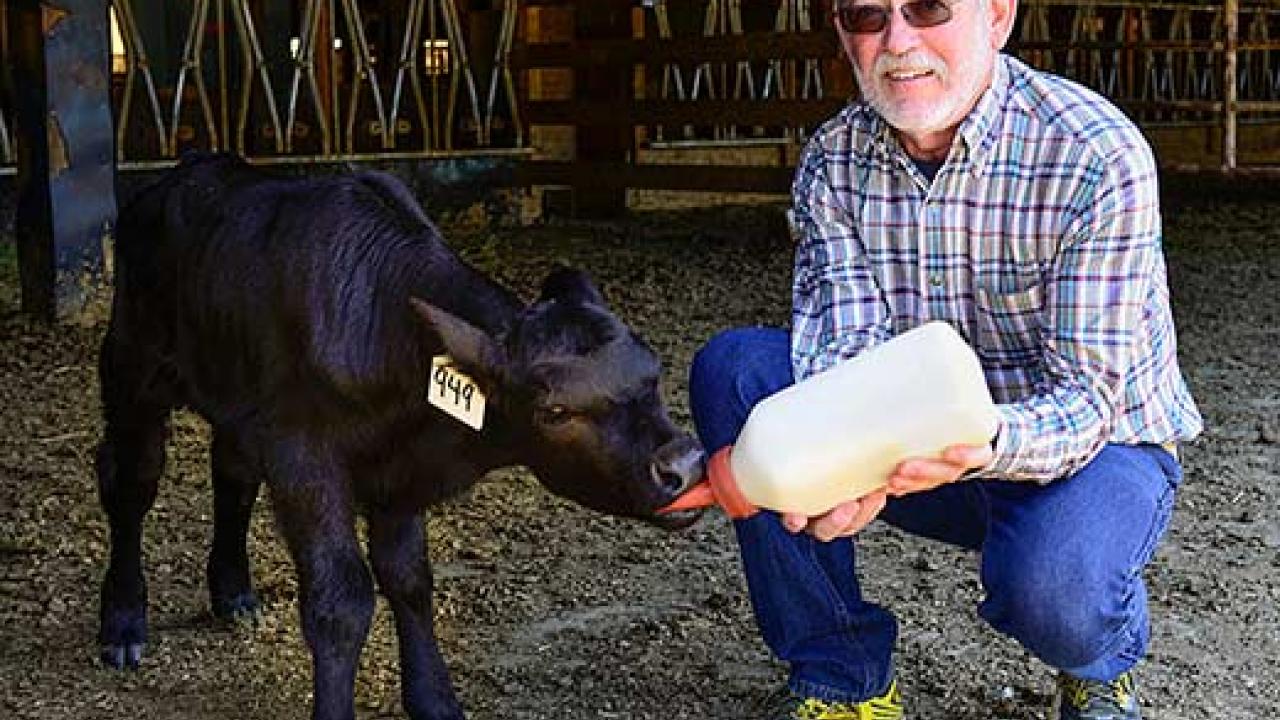Thanks in part to researchers at the UC Davis School of Veterinary Medicine, cattle ranchers in California, Nevada and Oregon are one step closer to having a vaccine available to treat a tick-borne bacterial disease -- commonly known as foothill abortion -- which kills cow fetuses.
The U.S. Department of Agriculture approved the expansion of ongoing field trials in November for an experimental vaccine, developed by UC Davis veterinary researchers, after it was shown to be effective in preventing foothill abortion in more than 2,000 cattle. The expanded trials began in April and will further establish the vaccine’s effectiveness in varied conditions as well as provide relief to ranchers. (A news article about the vaccine trials will appear May 8 in the journal Science.)
Cattle ranchers seek relief
Foothill abortion -- endemic in California’s coastal range and the foothill regions of California, Southern Oregon and Northern Nevada -- is a bacterial disease in cattle also known as epizootic bovine abortion. It is a major cause of economic loss for California beef producers, annually causing the death of an estimated 45,000 to 90,000 calves.
The disease is transmitted by bites from the pajaroello tick, found only in the intermountain West. The tick lives in the soil around juniper, pine and oak trees, and in dry brush areas and around rock outcroppings of foothill rangelands. The disease became known as "foothill abortion" after ranchers in the 1930s and 1940s noticed that the pregnant heifers they sent to pasture in the foothills aborted after returning to valley pastures. Infected pregnant cows show no obvious symptoms but the bacteria can infect their fetuses in the first half of gestation before they develop an immune system capable of fighting off the infection. Cows will carry the infected fetus to term but the calves are born either dead or very weak and fail to thrive.
“Our Western cattle producers are desperate for some relief to stop their losses resulting from this disease,” said Professor Jeff Stott, a UC Davis veterinary immunologist. Stott has led the effort in collaboration with the California Cattlemen’s Association, the USDA Center for Veterinary Biologics, the Animal Health Branch of the California Department of Food and Agriculture, the Nevada Department of Agriculture, and the University of Nevada, Reno.
Fifth generation rancher Buck Parks from Lassen County is one example of a cattle producer who has experienced losses as a result of foothill abortion. His family first started noticing aborted cow fetuses in the late 1950s, but couldn’t pin down a cause. Until recently, he was losing an average of 25-35 calves each year to the disease from a herd of about 300 cows. He said about 20 percent of the losses are from “first-calf heifers,” or first-time mother cows. According to Parks, while the disease is regional, and spotty within those regions, it is challenging to run a cattle ranch for those affected.
“For those of us who suffer, it’s a very difficult thing to deal with,” he said. “Like any business, these kinds of losses make it tough to operate within our margins.”
Parks has been participating in the trials since the experimental vaccine first became available four years ago and has experienced significant results.
“Let’s just say that this year we only saw eight abortions,” he said.
Stott is confident the vaccine can help prevent foothill abortion for cattle producers like Parks. There already has been interest from niche pharmaceutical companies in manufacturing the vaccine.
Quest for elusive vaccine
Identifying the cause of foothill abortion and developing a vaccine to prevent it has proved a long-term challenge for researchers at the UC Davis School of Veterinary Medicine. In fact, some scientists have spent entire careers pursuing identification of the causative agent of foothill abortion.
In the 1970s, UC Davis veterinary scientists determined that the pajaroello tick transmitted the disease and in the early 1980s found evidence that infected cow fetuses were producing an immune response to an unidentified microbe.
Progress was slow due to the inability to culture the microbe in the laboratory, and it wasn’t until the beginning of the new millennium when UC Davis researchers managed to identify a causative agent using molecular biology tools.
In 2000, Stott and colleagues made what they considered to be a dramatic breakthrough in vaccine development when they discovered how to grow the live bacteria in mice lacking an immune system. This led them to initiate studies to develop an experimental live-bacteria-based vaccine in 2009 in collaboration with the University of Nevada, Reno.
Preliminary vaccine field trials began in 2011 and have since involved more than 4,000 cattle in California and Nevada. The expanded trials involving several thousand more cattle are expected to last into 2017.
UC Davis is growing California
At UC Davis, we and our partners are nourishing our state with food, economic activity and better health, playing a key part in the state’s role as the top national agricultural producer for more than 50 years. UC Davis is participating in UC’s Global Food Initiative launched by UC President Janet Napolitano, harnessing the collective power of UC to help feed the world and steer it on the path to sustainability.
Media Resources
Pat Bailey, Research news (emphasis: agricultural and nutritional sciences, and veterinary medicine), 530-219-9640, pjbailey@ucdavis.edu
Jeff Stott, Veterinary Medicine, (530) 752-2543, jlstott@ucdavis.edu
Monique Garcia Gunther, Veterinary Medicine, (530) 752-4272, mgunther@ucdavis.edu
